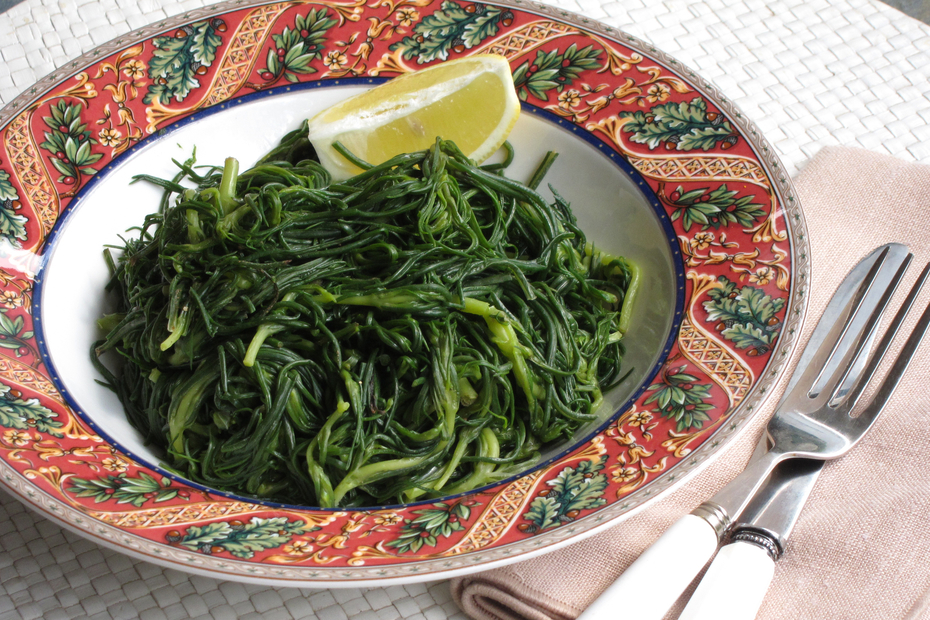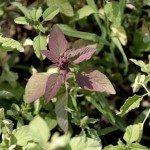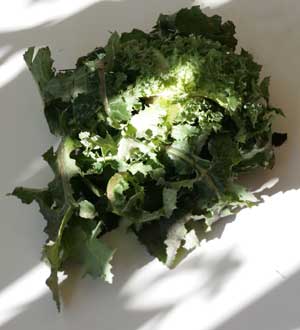 In Greece, people eat well over 300 edible wild plants, many of them weeds! We call them horta and they are nutritional bombshells, bursting with vitamins, minerals and all sorts of other great things. Today, in one of the main Greek papers, I read about the cookbook of recipes from Nazi-Occupied Greece, a time when people in Athens, where starvation was rampant, survived on these accessible, nutritious, and delicious greens. Many of the greens we forage for here in Greece are wild; many are also now cultivated. I have found many of the same greens in Asian markets across America. As for the list of edible greens, with English and Greek names provided, it’s a work in progress. I look forward to your comments. Take a look at my growing list of recipes for greens, too.
In Greece, people eat well over 300 edible wild plants, many of them weeds! We call them horta and they are nutritional bombshells, bursting with vitamins, minerals and all sorts of other great things. Today, in one of the main Greek papers, I read about the cookbook of recipes from Nazi-Occupied Greece, a time when people in Athens, where starvation was rampant, survived on these accessible, nutritious, and delicious greens. Many of the greens we forage for here in Greece are wild; many are also now cultivated. I have found many of the same greens in Asian markets across America. As for the list of edible greens, with English and Greek names provided, it’s a work in progress. I look forward to your comments. Take a look at my growing list of recipes for greens, too.
Foragers and lovers of wild things might find the following list useful. It represents the tip of the iceberg of wild foods that Greeks eat. I will be adding more to this list in the next few days.
Amaranth (Amarantus blitum). Vlita is the Greek name of this ubiquitous summer green, which is boiled for salads but also cooked into pies and vegetable stews, especially with zucchini.
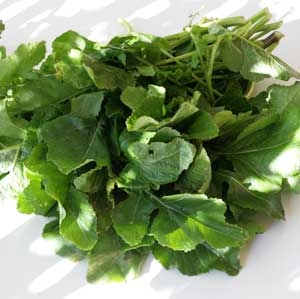
Bitter dock (Rumex obtusifolius). In Greece, lapatho is a green savored inside savory pies.
Black bryony (Tamus communis). Avronies are one of the most sought-after wild greens, a harbinger of spring that looks like thin-stalked asparagus but has a bitter taste. Greeks sauté them in olive oil and cook them in omelets.
Black nightshade (Solanum nigrum). Styfno is a common garden weed that grows in early summer. It’s the green from which strychnine is produced, but its leaves are perfectly safe to eat, and Greeks do just that, boiling them for a delicious salad.
Blue mallow (Malva silvestris). Both savory pies and boiled greens salads feature the moloha of the ancients.
Borage. [botanical name?] Borage leaves go into salads and so do its lavender flowers. Greeks call this springtime favorite boratzi.
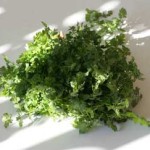
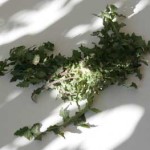
Common reichardia (Picridium vulgare). The Greeks call this pikralida or galatsida and esteem it highly, especially in boiled salads. It has a sweet taste and is one of the best winter greens.
Dandelion (Taraxacum officinale). Known as radiki in Greek, dandelion greens are eaten raw or cooked in salads.
Garden cress (Lepidium sativum L.). Called kardamo in Greek, this peppery green is one of the few enjoyed almost exclusively raw in salads.
Golden thistle (Scolymus). By far one of the most ancient wild prizes among Greek flora, askolymbrus is a delicious, expensive green eaten as a boiled salad or in stews, especially with avgolemono sauce.
Grass lily, or star of Bethlehem (Ornithogalum). This thin-stalked green with its starlike flowers and long cluster of green buds is in season in the early spring, just before the asparagus and bryony are ripe for the picking. Greeks use it in pies.
Mediterranean hartwort (Tordylium apulum L.). The Greeks call this kafkalida and consider it one of the most aromatic greens for savory pie fillings.
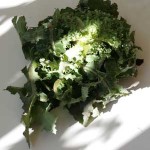
Nettles (Urtica dioica). Tsouknida is the term for stinging nettles, which are always eaten cooked, often in pie fillings and soups.
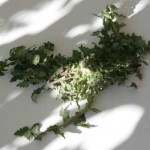
Prickly lettuce (Lactuca scariola). The tender shoots and thin, rounded leaves of petromaroulo, as it’s called in Greek, are typically boiled for salads.
Purslane (Portulaca oleracea L.). Glistrida, which means “slippery,” is the Greek word for purslane because purslane supposedly loosens the tongue and makes people chatter. Greeks add it raw to salads or eat it cooked, especially with garlic and yogurt.
Redstem stork’s bill (Erodium cicutarium L.). Known as kalogeros in Greek, which means “monk,” this green is mainly cooked with a mix of others for pie fillings. It also goes by another name, roughly translated as “the partridge’s nail,” probably because of the long, needlelike shape of its shoots.
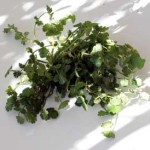
Shepherd’s purse (Capsella bursa pastoris). Called kardamo in Greek, this peppery green is typically boiled up for salad.
Sow thistle (Sonchus oleraceus). Zohos to the Greeks, sow thistle makes for one of the best salads, especially when mixed with other greens.
White mustard (Sinapis alba). A spicy green whose Greek name, sinapi, sounds like its Latin nomenclature. Sinapi is traditionally boiled for salads.
White upright mignonette (Reseda alba). Called rezeda in Greek, this is a rare green found along rocky coasts. It is mainly used in boiled salads and as one of many greens in savory pie fillings.
Wild Fennel (Foeniculum vulgare). Known as marathon to the Greeks, wild fennel is rampant on the Aegean islands in the spring and is used in salads, savory pies, fritters, and stuffed dishes.
Yellow salsify (Tragopogon). The Greek name, tragopogon, is the same as the plant’s botanical nomenclature. It means “ram’s beard,” and was inspired by the long, wispy shape of this delicious springtime shepherds’ favorite. It is delicious both raw and cooked; its tender buds are one of the great country pickles of Greece.
